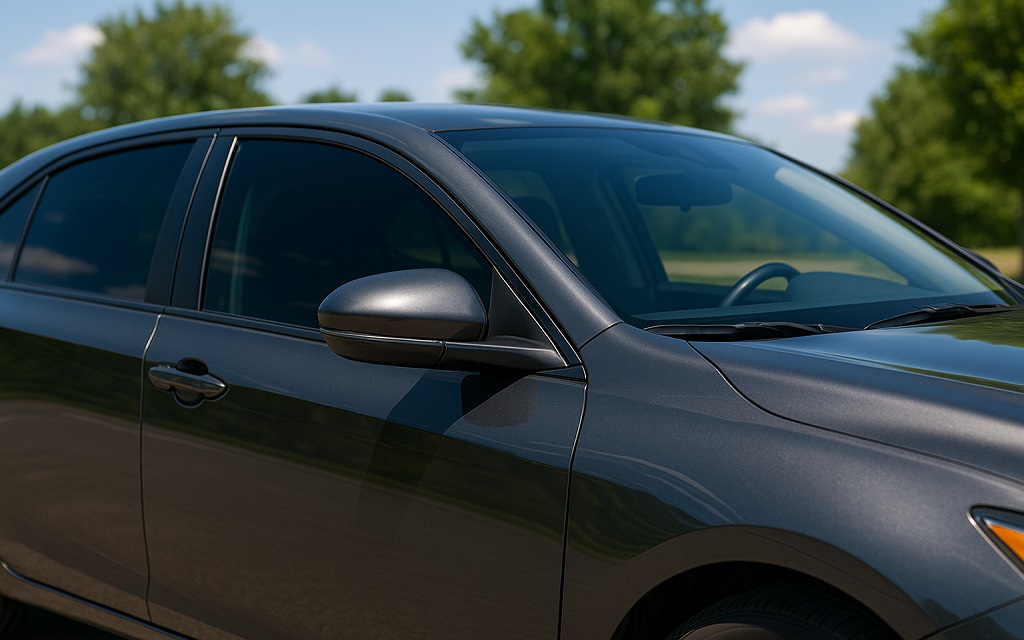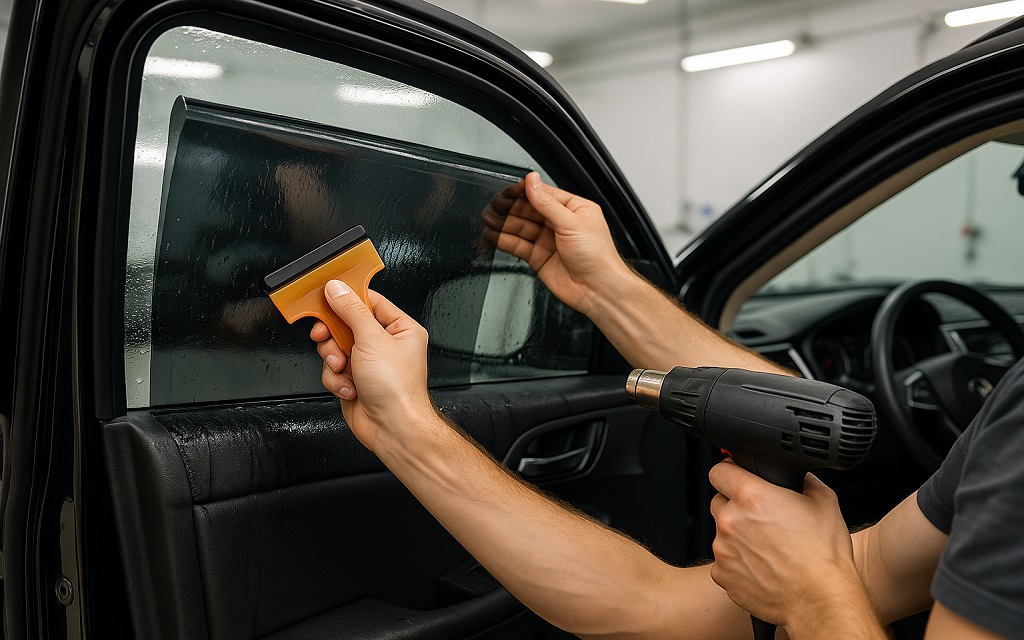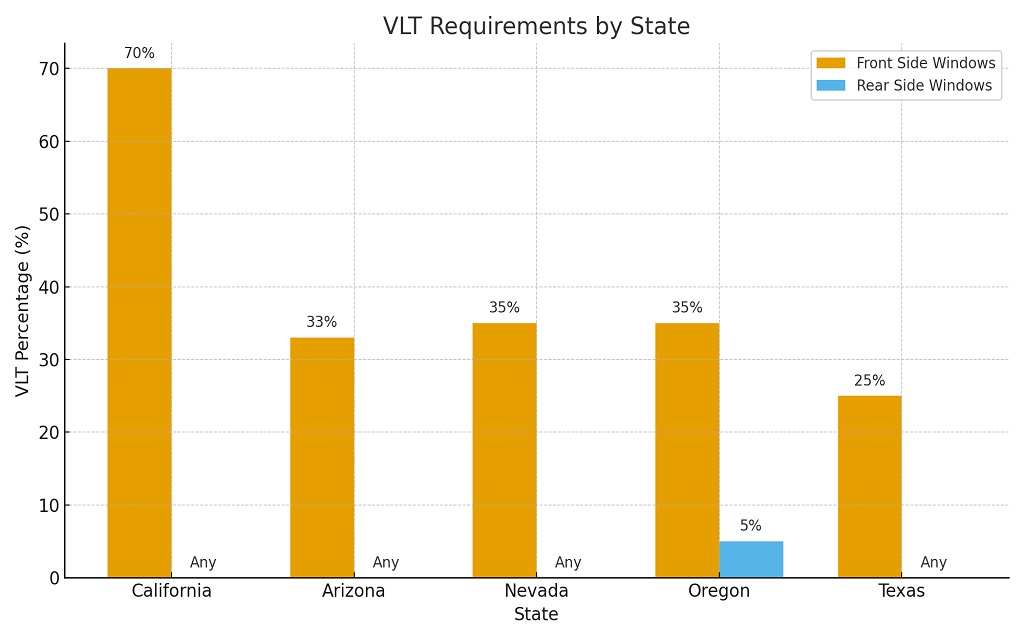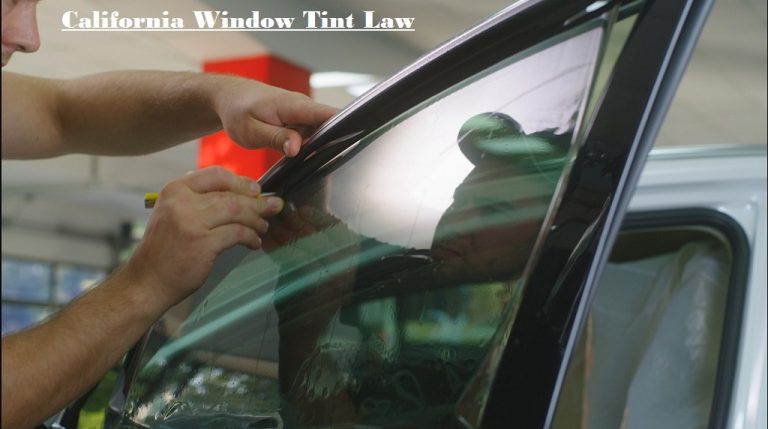You must follow strict vehicle tint laws when you drive in California. You face fines and legal trouble if you ignore these rules. You must be aware of the legal amount for tint in California to avoid potential violations. You protect your safety and reduce your risks by applying the correct film. Many drivers apply illegal tint without knowing the limits. You must check the rules before installation.
This article explains the legal amount of tint in California using the updated 2025 standards. You get clear answers for each window and exemption. You stay road-legal when you follow California Vehicle Code §26708. You also lower your chances of a ticket when you meet the legal amount of tint in California.
What Is the Legal Amount of Tint in California Windows?
You face strict window tint laws in California under California Vehicle Code §26708. You must know the legal tint limit before you install film on your vehicle. You avoid costly mistakes when you understand how the rules apply to each window. You also protect your safety and your visibility on the road when you follow the law.

Legal Limits for the Front Windshield
You can only apply non-reflective tint to the top four inches of your windshield. You must keep the rest of the windscreen clear to maintain a full view of the road. You reduce glare and protect your eyes without breaking the law by following this rule.
Tint Requirements for Front Side Windows
You must keep at least 70 percent visible light transmission on the front side windows. You cannot apply a reflective film that shines more than standard glass. Maintaining high visibility and avoiding enforcement action is crucial when you comply with this rule. Statistics from the California Office of Traffic Safety show higher crash risks when drivers lose visibility.
Rules for Rear Side Windows and the Back Windshield
You can apply a darker film to the rear side windows and the back windshield. You can even choose a fully opaque film. You must install dual-sided mirrors if you tint the rear windshield. You create better safety conditions and reduce legal exposure by meeting these requirements.
You now know that each window has a different standard under California law. You can ensure your vehicle remains legal by checking the visible light transmission percentages before installation. You can also ask a professional installer to confirm compliance.
What Happens If You Break California Tint Laws?
You face penalties if you apply illegal tint to your vehicle. You must understand the consequences before you make any changes. You lower your risk of fines and legal problems when you follow California tint rules.
First-time violations and citations
You usually receive a fix-it ticket for your first offense. You must remove the illegal tint and show proof to law enforcement. You often pay a base fine of around 25 dollars plus court and administrative fees. You avoid further penalties when you correct the issue in a timely manner.
Repeat offenses and higher fines
You pay more if you break the law again. You may face non-correctable citations. You pay between $100 and $250, depending on your location and prior violations. You also raise your risk of being stopped more often during traffic enforcement. According to the California Highway Patrol, officers issued over 25,000 citations for window tint violations in 2023.
Legal risks after an accident
You incur additional legal exposure if you cause an accident with illegal tint. You may experience a reduction in your field of vision. You may lose an insurance claim if investigators link the crash to poor visibility. You risk being found partially or fully at fault. You also face challenges when testifying or defending yourself in civil court.
You protect yourself by knowing how the law penalizes non-compliance. You must think ahead before applying film that looks dark or flashy. You can ask a certified shop to test your tint if you have any doubts. You avoid financial stress and legal issues by staying within the limits.
How Can You Make Sure Your Tint Is Legal?
You must take the necessary steps to comply with California’s tint law. You avoid costly violations when you stay informed before you apply any film. You also reduce confusion by using reliable tools and services.

Testing the visible light transmission
You need to check the visible light transmission, also known as VLT. You must ensure that your front side windows allow at least 70 percent of visible light to pass through. You can use a digital tint meter to measure this percentage. You should ask the installer to test the windows after they are installed. You stay compliant when your VLT meets legal standards.
Using a certified tint installer
You increase your chances of compliance when you visit a licensed shop. You should choose an installer who understands California Vehicle Code §26708. You must request documentation that proves the film is legally available for distribution. You also need a compliance label on the driver’s side door jamb. This label should list the manufacturer and the film’s VLT level.
Verifying reflectivity and label placement
You cannot use reflective film that produces more glare than factory glass. You should avoid chrome or mirrored tints that attract extra attention from officers. You need to confirm that each window has the correct certification label. You stay safe and prevent inspection failures when your labels are visible and accurate.
According to state DMV guidance, over 40 percent of tint tickets result from uncertified installations. You can avoid these problems by using certified materials and requesting proof of legality.
You stay within the law when you confirm that every window meets the rule. You also make sure your insurance remains valid in case of a dispute. You protect yourself on the road and in court by following this process.
Medical Exemptions for Darker Tint in California
You may qualify for a medical exemption if you have a condition that requires extra protection from sunlight. You must follow specific rules to be eligible for this exemption. You lower your legal risk by keeping valid paperwork in your vehicle.
Conditions that qualify under California law
If you suffer from photosensitivity or a condition that is exacerbated by UV exposure, you can qualify for a medical exemption. Porphyria, melanoma, lupus, and other known diseases are a few examples. You must ask your doctor to assess your condition. You only qualify when a licensed medical professional certifies your need for special tint.
Required documentation and DMV rules
You must carry a signed letter or form from your physician at all times. You must show this proof to law enforcement if stopped. You also need to submit this form to the California Department of Motor Vehicles. You should check the current exemption form on the DMV website. You must renew this documentation as required by state law.
Legal limits still apply in some areas
You may apply a darker film, but you must still meet safety requirements. You cannot block your entire windshield or impair your view. You still need dual side mirrors if you tint the rear windows. You may use transparent UV-blocking film if darkness is not medically required.
Reports from California’s Department of Public Health show that UV-related conditions affect thousands of drivers yearly. You can reduce symptoms while meeting state rules by using approved medical tint.
You protect your health and legal rights by following the exemption process. You must keep your paperwork up to date and visible. You reduce stress and avoid fines by meeting both medical and legal standards.
How Do Other States’ Tint Laws Differ from California’s?
You should be aware of the differences in California’s tint laws compared to those in other states. You avoid legal issues during travel when you are aware of each state’s limits. You also reduce confusion when moving between regions.

VLT rules across nearby states
You must follow California’s strict 70 percent VLT rule on front side windows. This rule is more authoritarian than most neighboring states. In Arizona, you may use 33 percent VLT. In Nevada, you must meet a 35 percent minimum. Oregon also allows 35 percent VLT on front windows. Texas is one of the most forgiving states in the area, allowing a 25 percent VLT.
When traveling into or out of the state of California, be aware that your expectations may need to be adjusted. You stay legal by knowing where your tint crosses the line. State police agencies in Nevada and Arizona confirm that they frequently stop vehicles for out-of-state tint violations.
Rear window and back windshield comparison
You face fewer restrictions in California on rear windows and the back windshield. You may use any level of darkness as long as your vehicle has dual side mirrors. This rule matches or exceeds the flexibility offered in other states. Arizona, Nevada, and Texas also allow dark or opaque rear tint. Oregon allows as dark as 5 percent VLT on back windows.
You may keep your rear tint consistent across multiple states. You only need to confirm that your side mirrors offer a clear rear view.
Tips for drivers crossing state lines
You should carry a compliance letter or proof of VLT if your tint appears dark. You can ask an installer to provide this document. You must also check the rules of your destination state before a long trip. You reduce risk by avoiding mirrored or reflective film in any state.
You stay compliant across borders when you match your front window tint to the strictest law in your route. You avoid tickets and roadside delays by planning.
FAQs
Is a 35% tint legal in California?
No, California requires at least 70% VLT on front side windows.
Is the tint darker at 15% or 30%?
Yes, a tint of 15% is darker than one of 30%.
In California, is it permissible to tint the back seats by 20%?
Yes, California allows any darkness on the rear side windows, provided there are dual side mirrors.
How dark is a hue of 35%?
A 35% tint appears rather gloomy, as it lets through 35% of visible light.
Does Florida allow 5% tinting?
No, Florida does not permit 5% tinting on front windows; however, it does permit it on the rear windows of some cars.
Final Thoughts on Tint Laws in California
You must follow the legal limits to stay safe and compliant on California roads. You face strict enforcement if your tint breaks the rules. You can avoid fines and disputes when you know what the law allows. You must apply the correct VLT levels to each window. You also must keep proof of compliance if asked by law enforcement.
You protect yourself from legal issues by checking the legal amount of tint in California before applying film. You must also confirm that any medical exemption meets state rules. You reduce your risk of liability in an accident when your tint follows the visibility standards.
You stay ahead when you follow California Vehicle Code §26708. You also protect your insurance coverage and your driving record. You should always ask a certified installer to verify the legal amount of tint in California. You stay legal, safe, and worry-free when you meet all the requirements.
Disclaimer: This article provides a general overview of the legal amount of tint in California, based on publicly available information, and is intended for informational purposes only. It is not legal advice.

![You are currently viewing Legal Tint in California [2025 Guide] Window Limits, Fines, and Exemptions](https://www.judicialocean.com/wp-content/uploads/2025/01/Legal-Amount-of-Tint-in-California.jpg)
